Decades of dedication – meet the Rocky Flats Site water monitoring leads.
May 28, 2020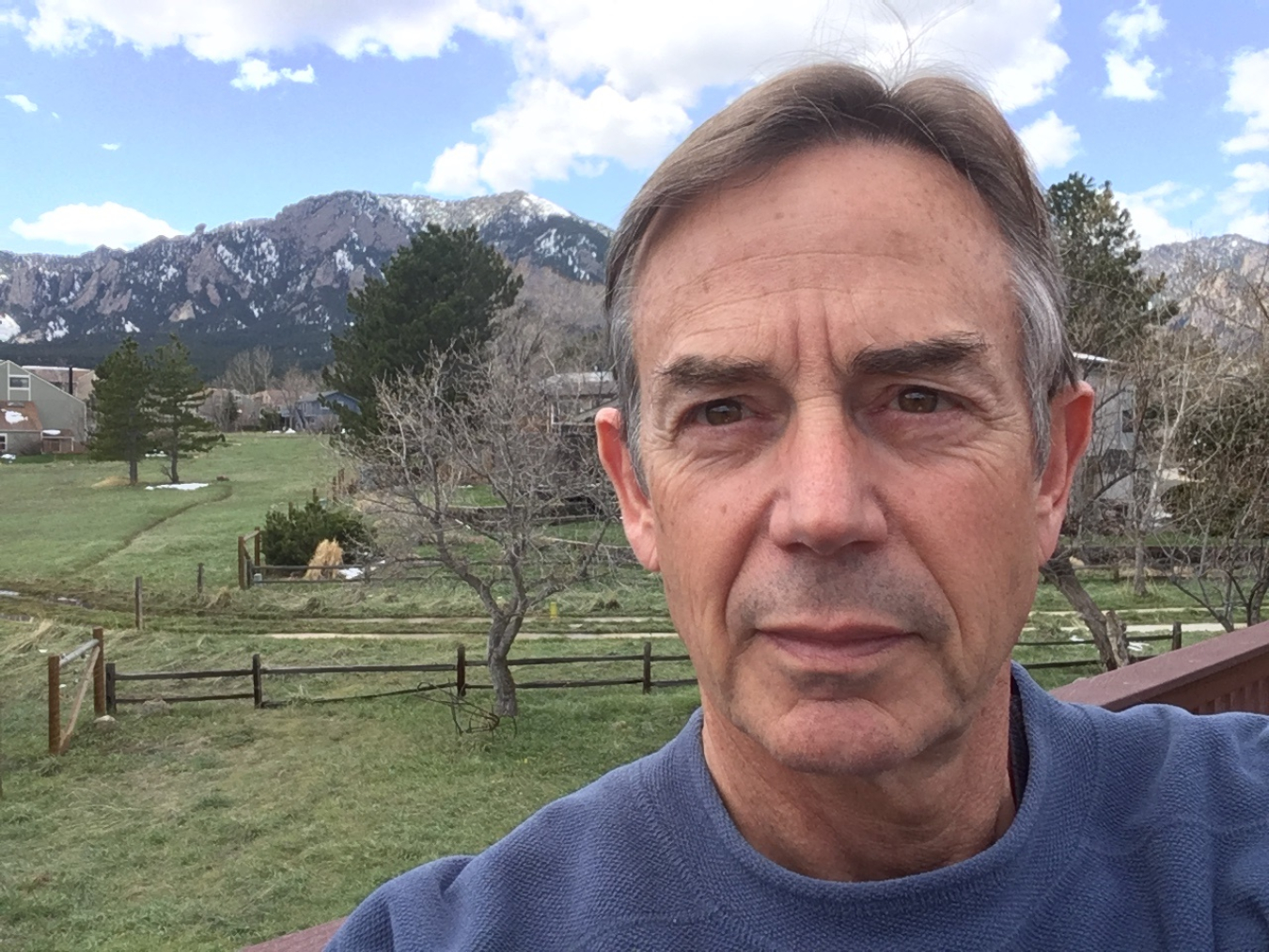
John Boylan, Rocky Flats Site groundwater monitoring lead.
Just as their careers were beginning, John Boylan and George Squibb — respectively, the current groundwater and surface water leads for the U.S. Department of Energy (DOE) Office of Legacy Management (LM) Rocky Flats Site in Colorado — were tasked with a daunting mission: support the environmental cleanup of a former nuclear weapons production site.
Boylan started working at the former Rocky Flats Plant auditing environmental characterization programs, then moved into different positions, eventually winding up in his current lead role in groundwater monitoring. “Working at Rocky Flats was something that, to be honest, initially I was terrified of because of all the stories we read in the news in this area,” said Boylan. “It was all about nuclear weaponry fear and loathing, and how bad things were.”
Squibb began working on the former Rocky Flats Plant cleanup project as a graduate student, managing and monitoring water from the site’s ponds and streams. “I started my professional career a little later than normal,” he said.
Boylan's and Squibb's responsibilities grew during the next 25-plus years, and they eventually led processes to ensure water leaving one of the nation’s former nuclear weapons production plants continued showing site systems and standards were protective of human health and the environment. The monitoring network has been streamlined to become more focused, based on decades of data collected before the former plant closed and through cleanup.
“Before cleanup ended at the site in 2005, we installed about 1,500 groundwater monitoring wells,” said Boylan. “Now, with the cleanup long finished, we have 88 wells from which we sample water quarterly, semi-annually, or once every other year. We monitor groundwater because it feeds into surface water found in a body like a creek or stream that moves off-site.”
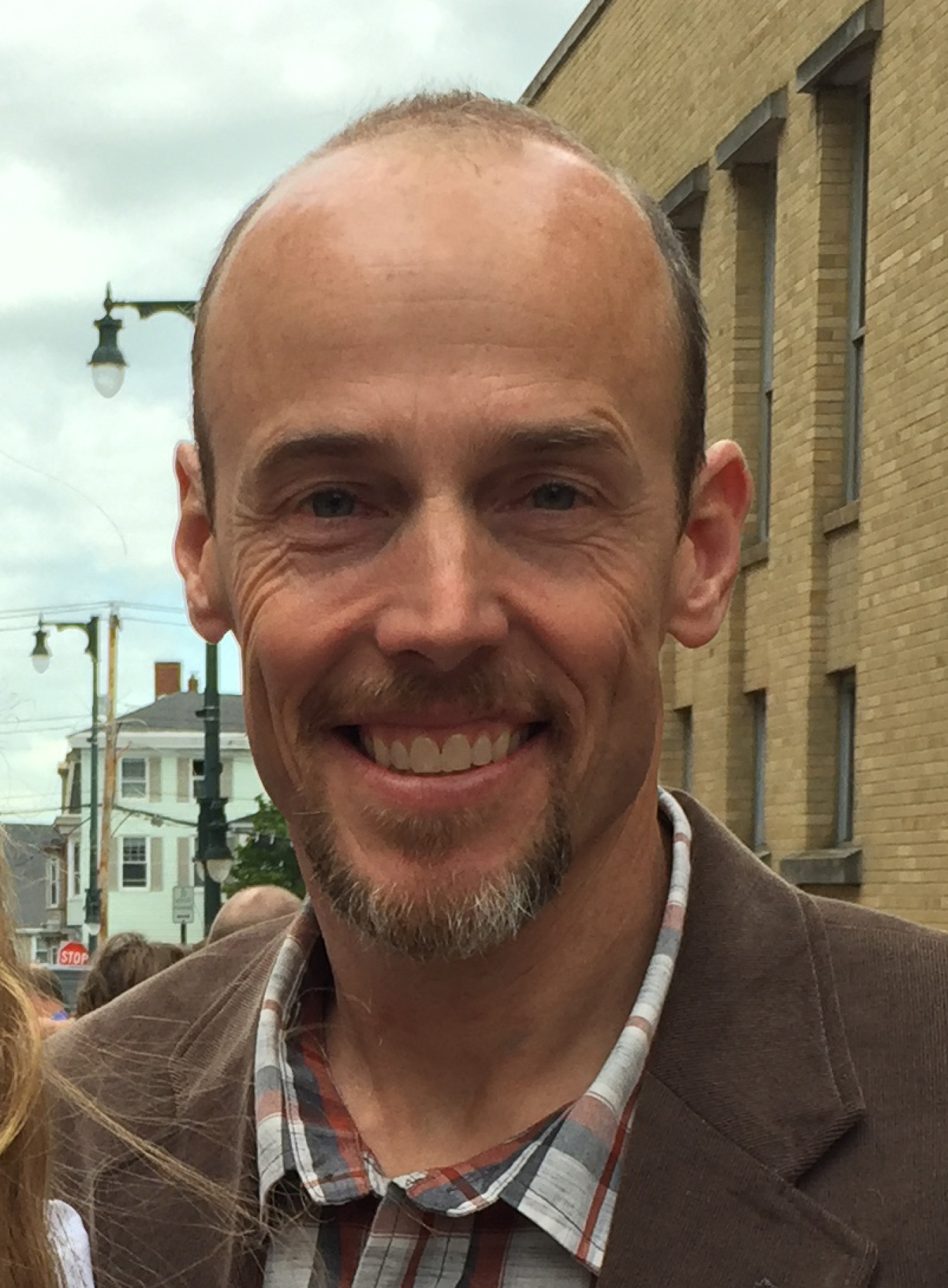
George Squibb, Rocky Flats Site surface water monitoring lead.
Squibb monitors the surface water, which is a continuous, automated sampling process. “It doesn’t require anyone to operate it, so we’re able to collect samples at night, in the snow — all year round,” Squibb said, noting that the current approach allows his team to collect thousands and thousands of samples annually for laboratory analysis.
Surface water is of greater monitoring interest because it flows off-site into public areas through a creek or stream.
Squibb says the farthest downstream sampling locations are at the site’s boundary and serve as the points of compliance. Having traveled through the site, this water flowing through these sampling locations must meet regulatory standards.
“At the points of compliance, we monitor for uranium, plutonium, americium, and nitrate, because these are the contaminants that pose the only significant risk to the public,” said Squibb. “By design, throughout the site’s cleanup, we removed almost all the contamination that we had originally identified.”
When it comes to uranium at the Rocky Flats Site, the surface water expert wants the public to know that there is naturally occurring uranium that predates any manmade residue. “The soils and groundwater at the Rocky Flats Site contain a lot of natural uranium simply due to the geologic materials that are native to the area,” said Squibb. “While there is some uranium left over from production activities of the former Rocky Flats Plant, the uranium found in the site’s surface water is predominantly natural.”
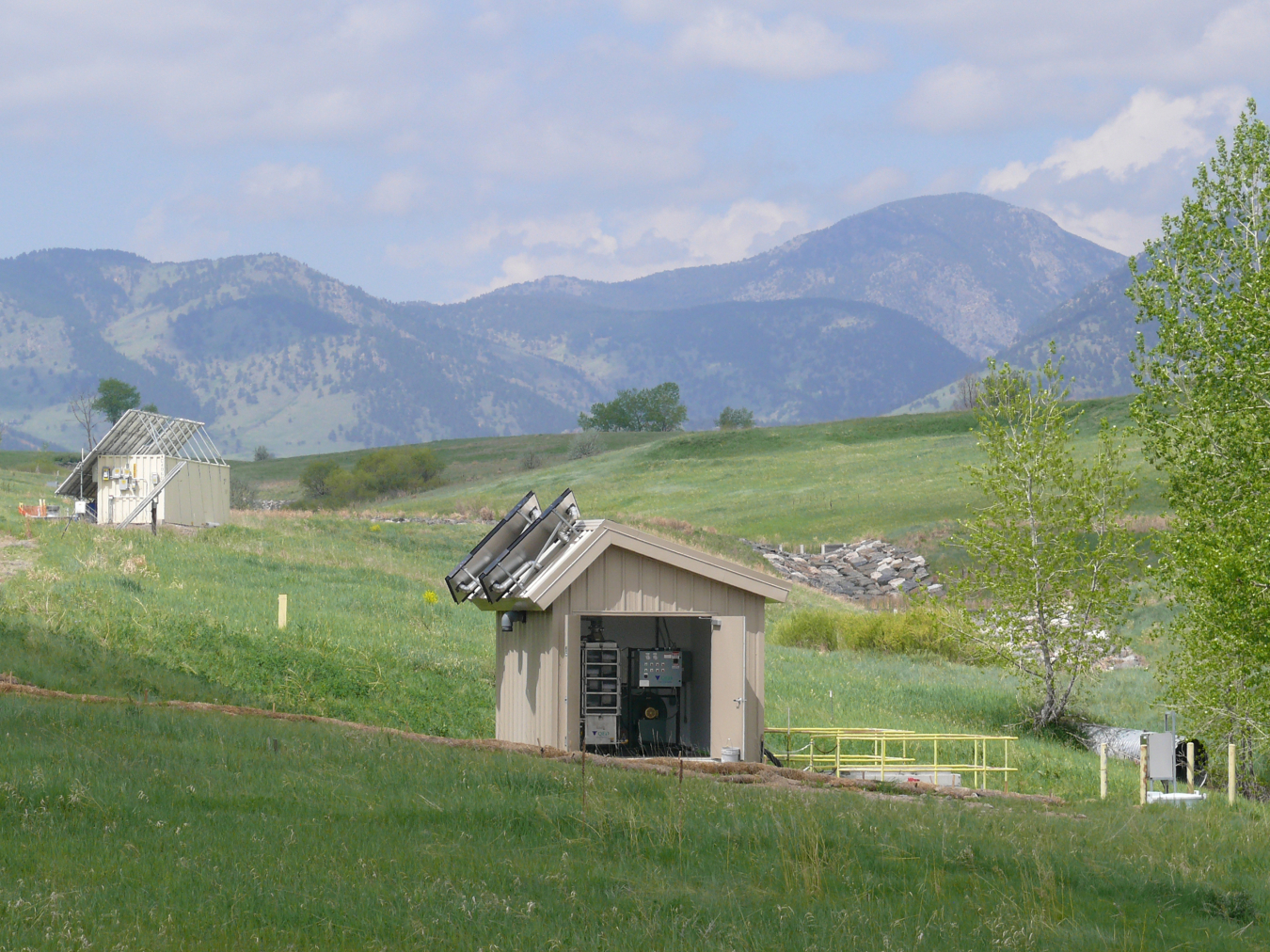
Rocky Flats Site solar-powered water treatment system.
The uranium standard applied at the Rocky Flats Site is lower than the U.S. Environmental Protection Agency’s drinking water standards. That irony is not lost on Boylan. “There can be more uranium coming out of a kitchen faucet into a drinking glass than what we can let flow off the Rocky Flats Site in a stream,” he said. In addition to monitoring and testing, the Rocky Flats Site team also treats groundwater in parts of the site using treatment systems that are entirely solar powered. The Rocky Flats Site is the only LM site to have a treatment system exclusively powered by solar energy.
For Squibb and Boylan, playing the long game has paid off. Squibb says part of that success has been having realistic goals that do not mean transforming the site into one with zero contamination.
“If we had removed all the contamination, we would have had to deposit the waste in another location — perhaps another state — and it would have cost many more tax dollars,” said Squibb. “Instead, we cleaned up the site until we had a very high degree of confidence that it wouldn't pose a threat to the public or the environment, while maintaining ongoing monitoring, treatment, and maintenance efforts.”
“Yes, I was initially nervous about getting involved with the Rocky Flats Site because of what I had heard,” said Boylan. “But once I began working there, I collected a huge number of samples and realized that most of what I’d heard wasn’t true.”
Boylan also noted that everyone should look at the data available on the Rocky Flats Site website to see for themselves how the site is continuously protective of human health and the environment.
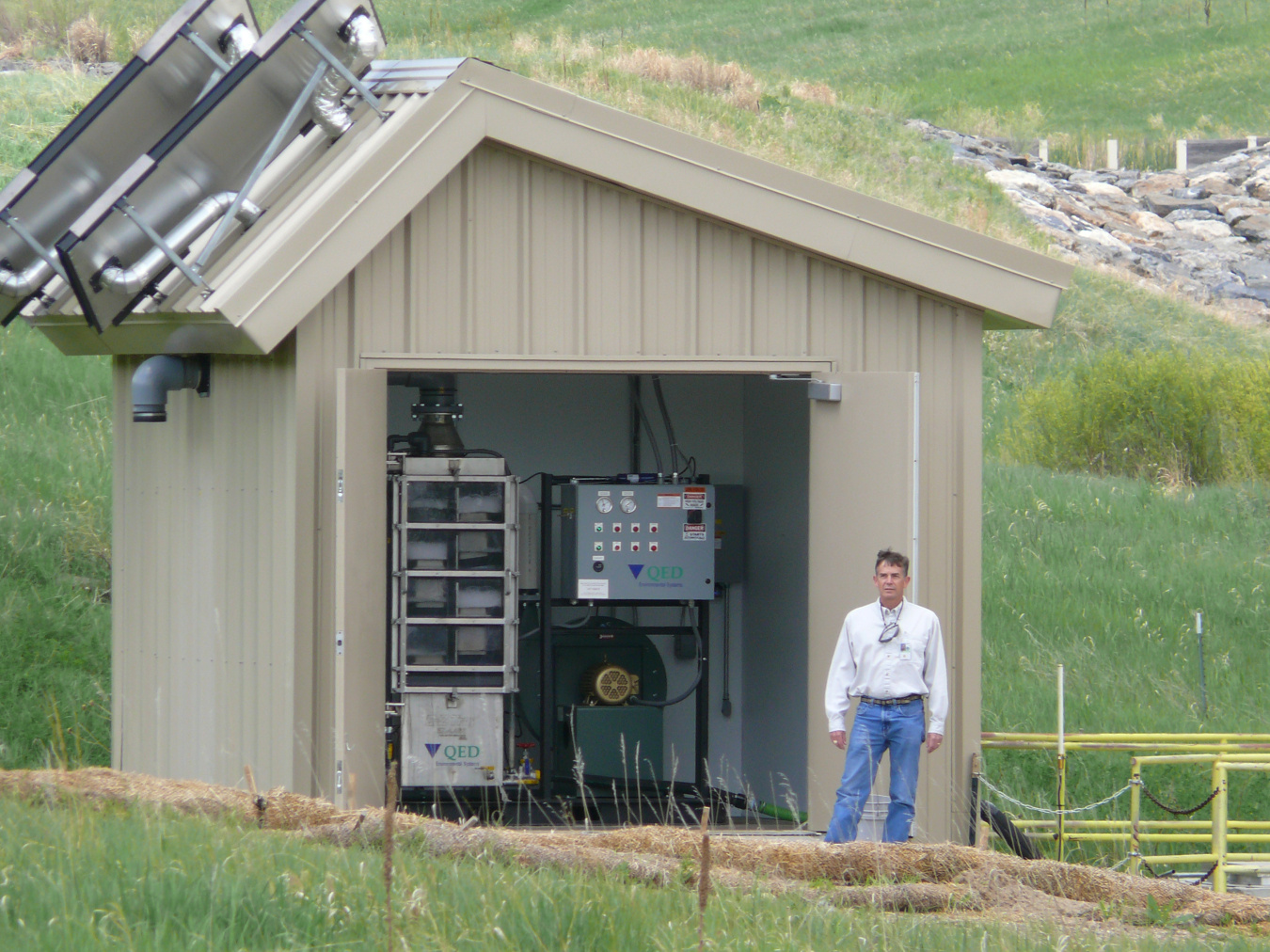
John Boylan working with the Rocky Flats Site solar-powered water treatment system.
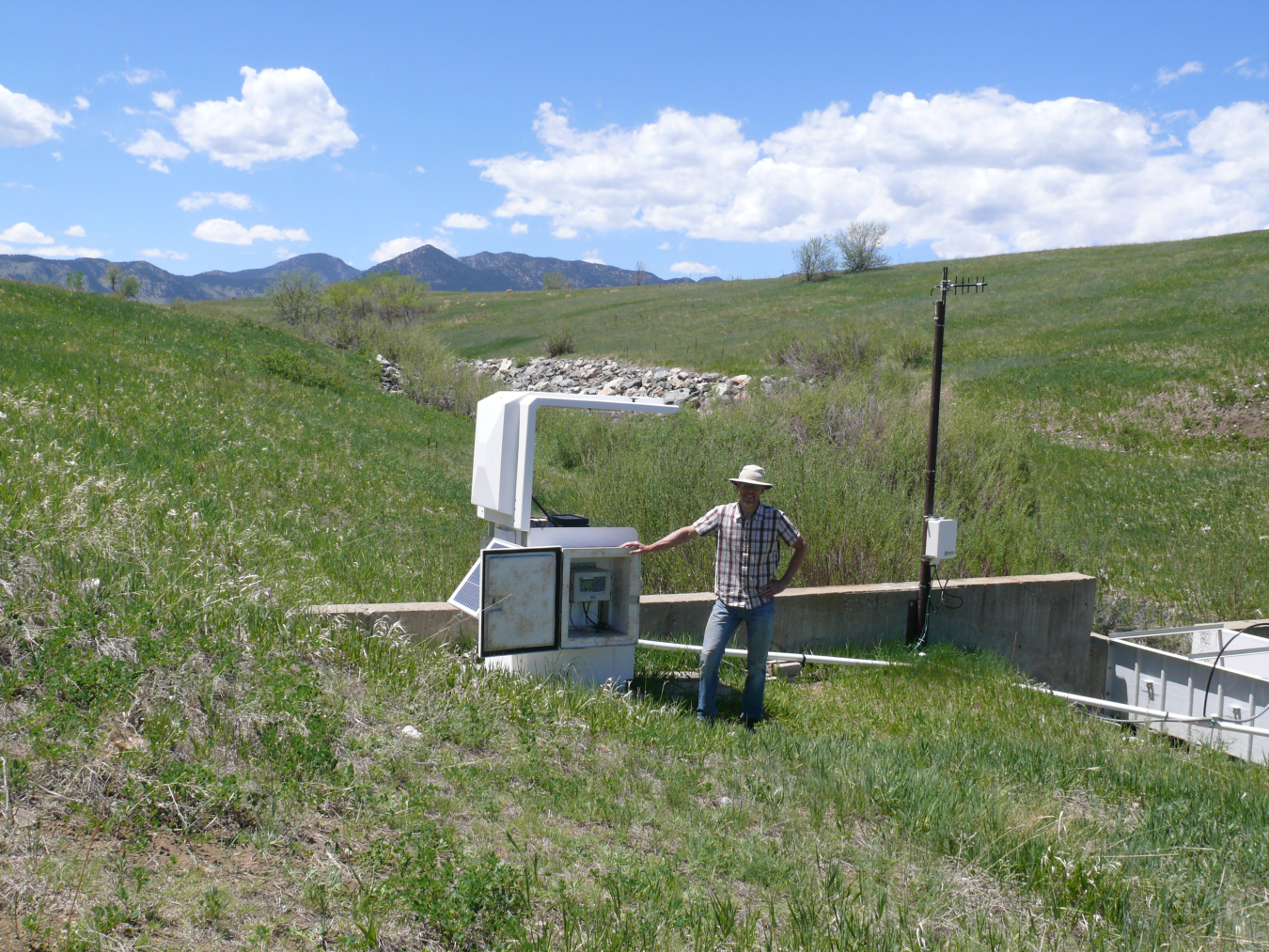
George Squibb at the Rocky Flats Site surface water monitoring unit.

